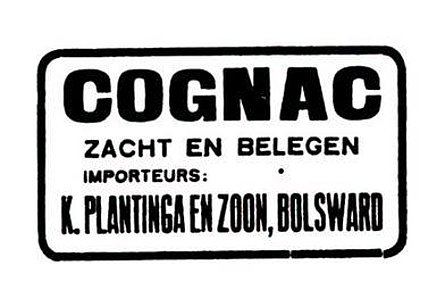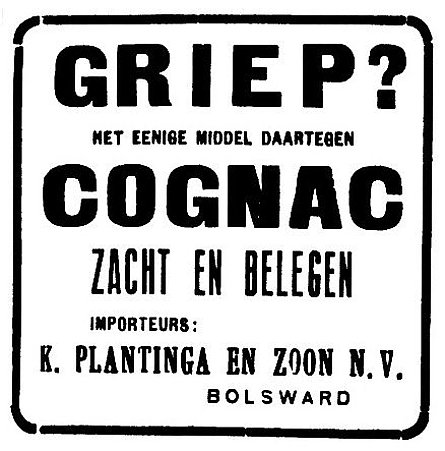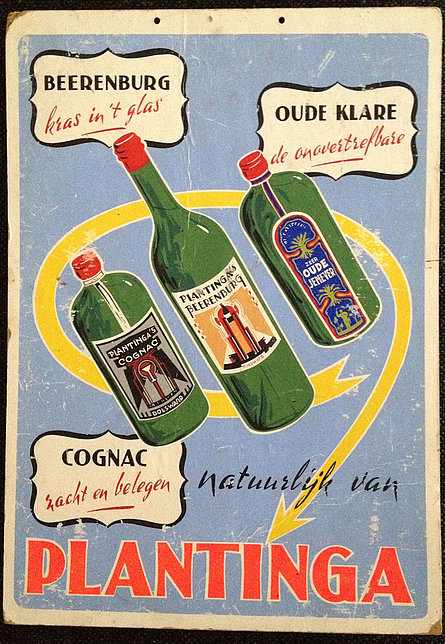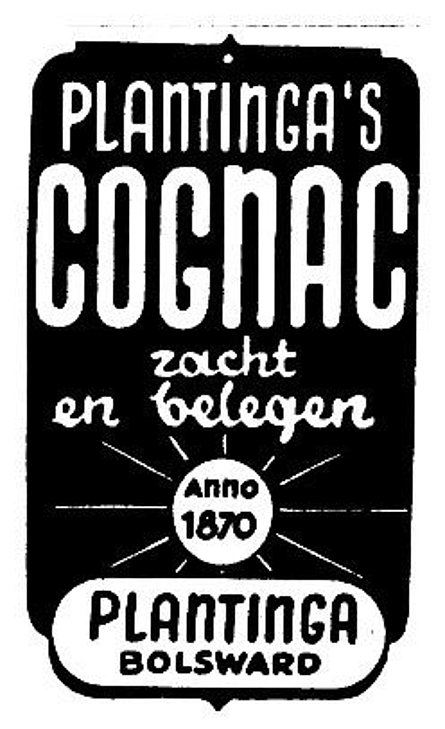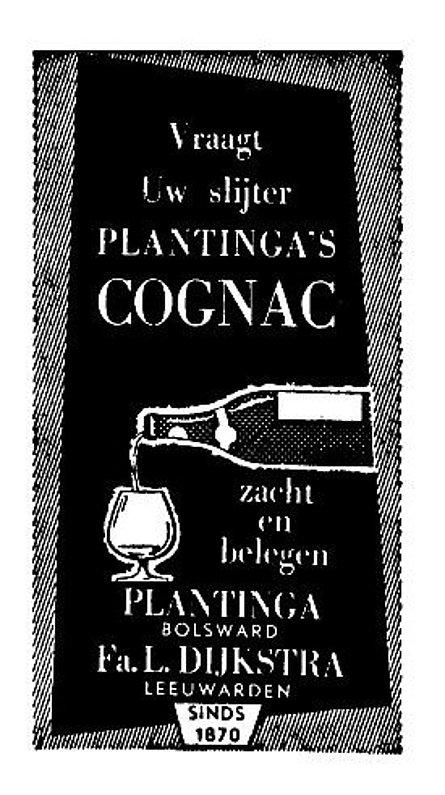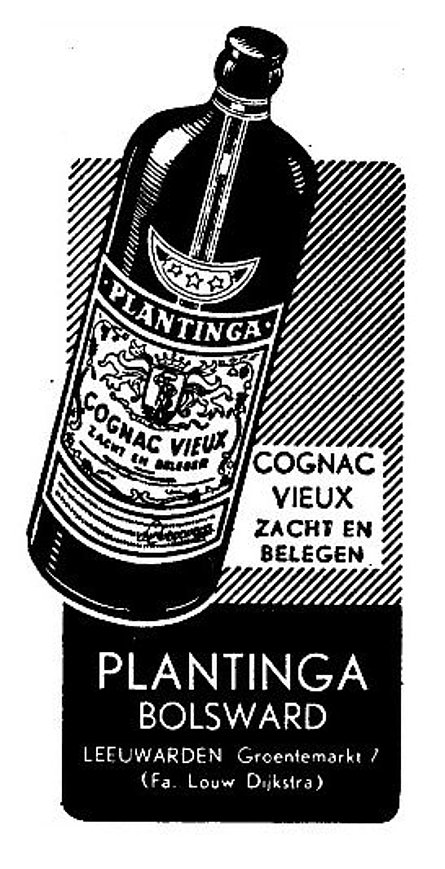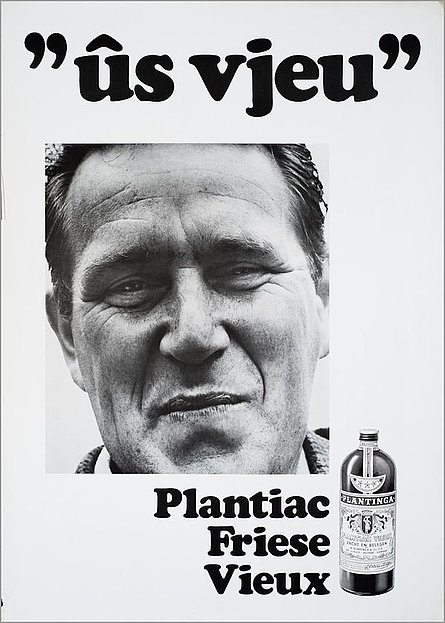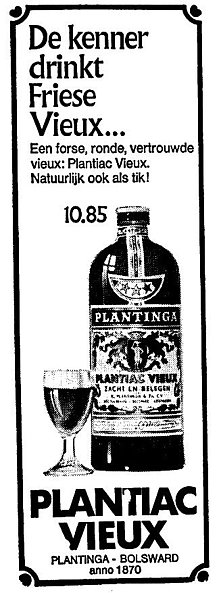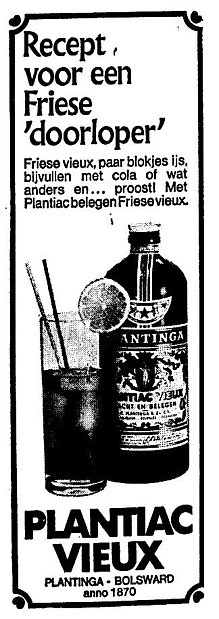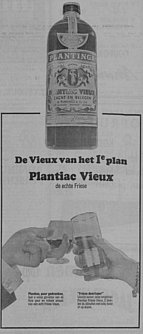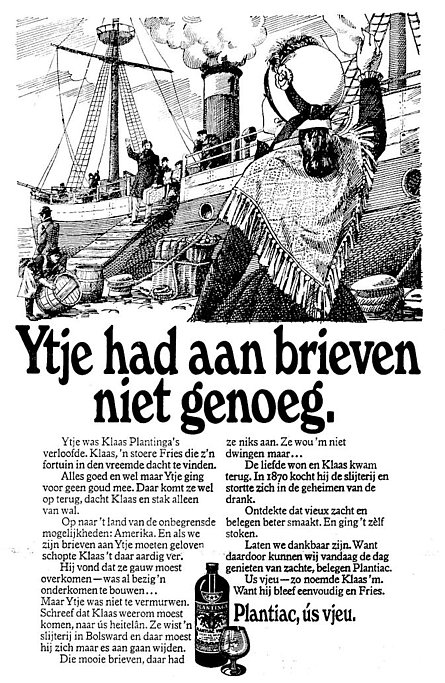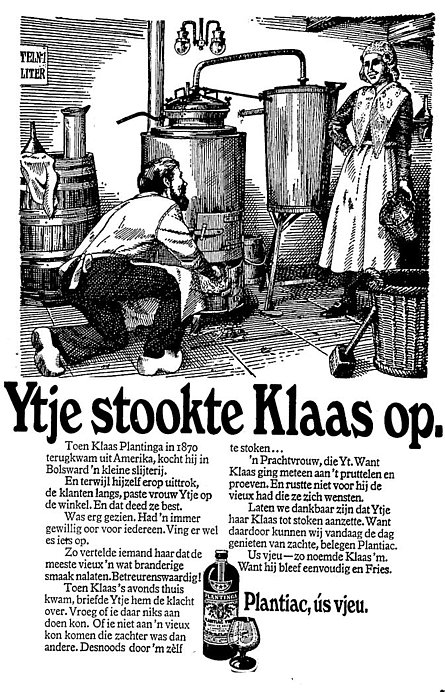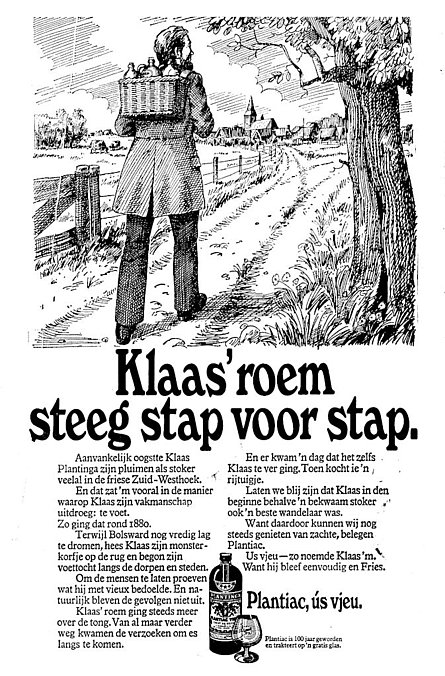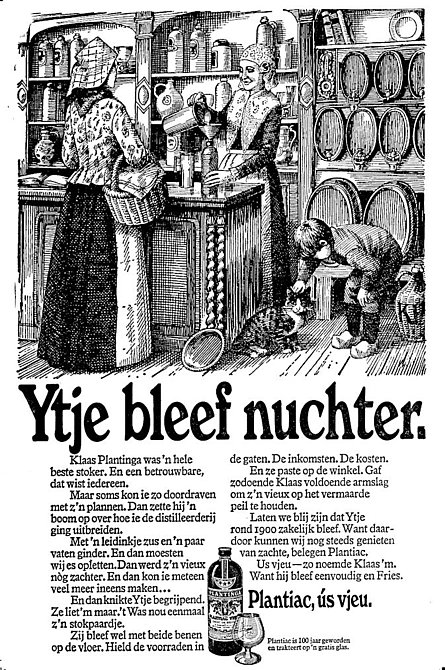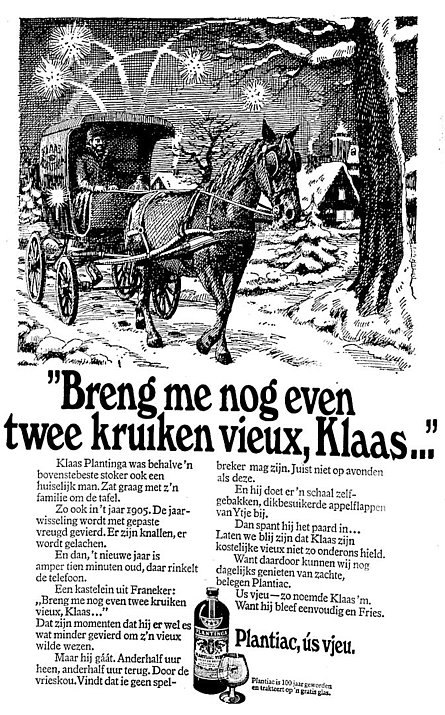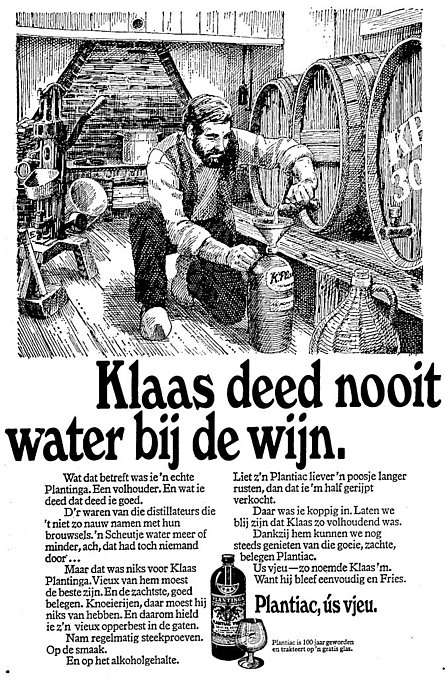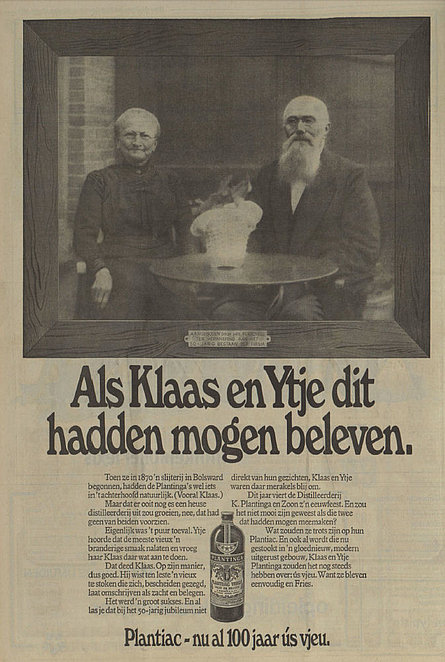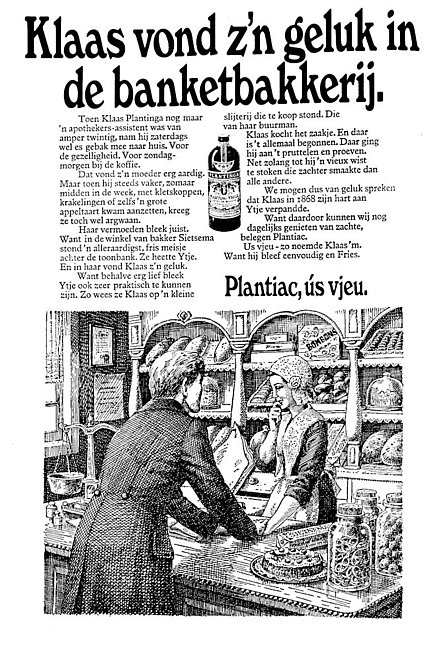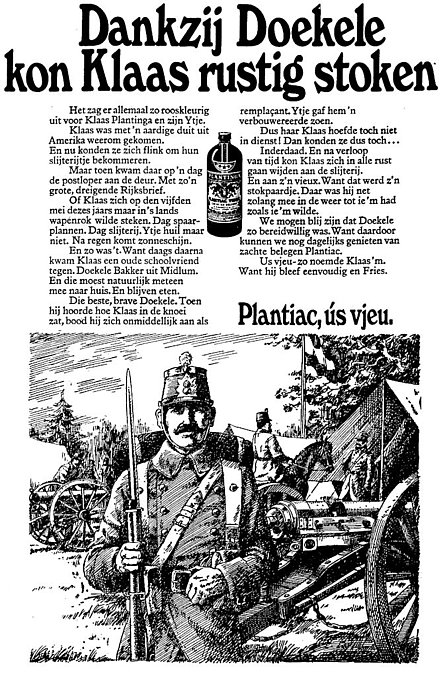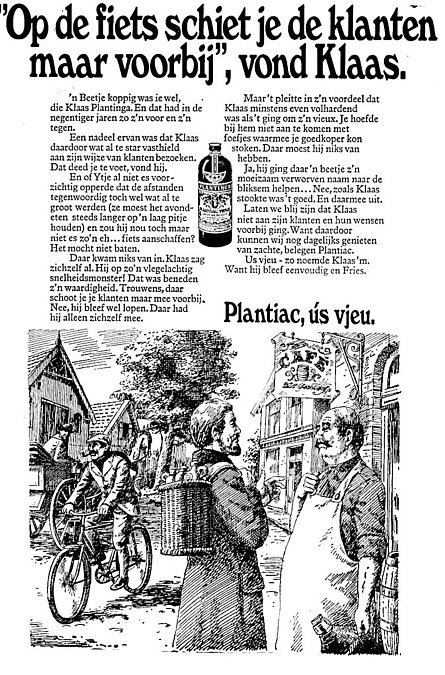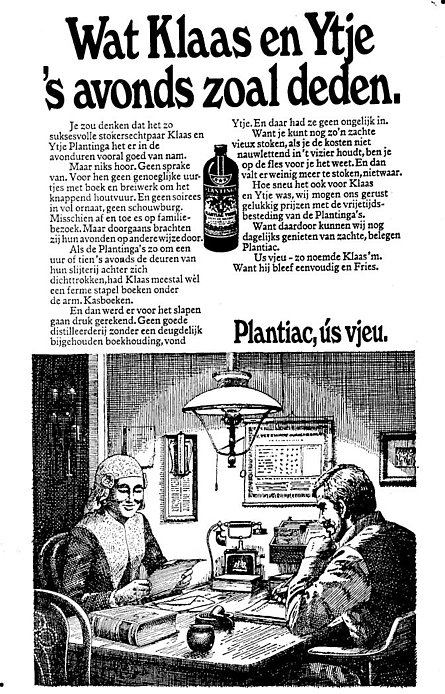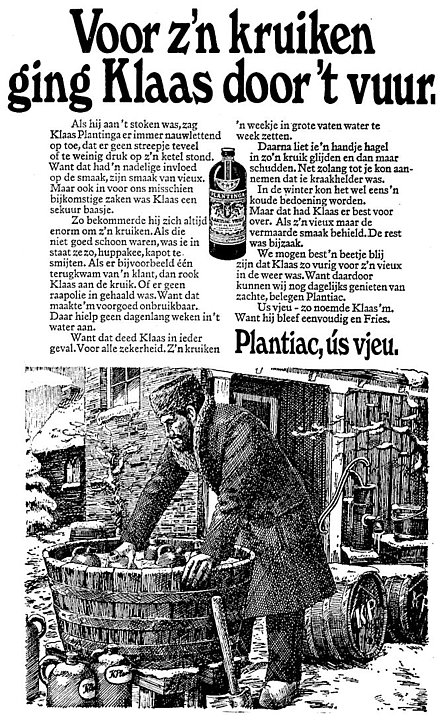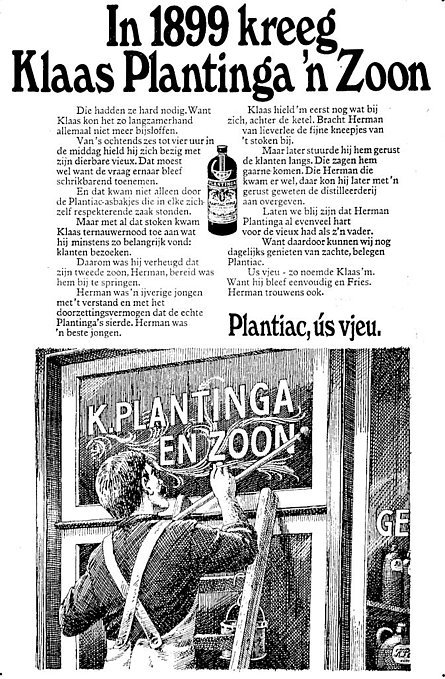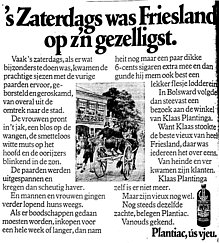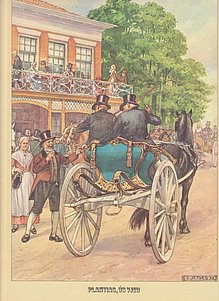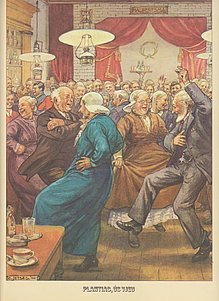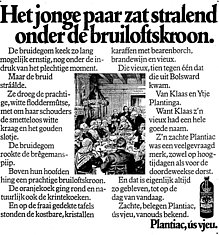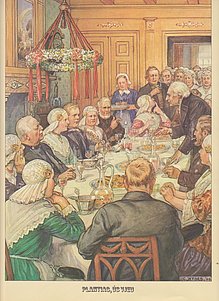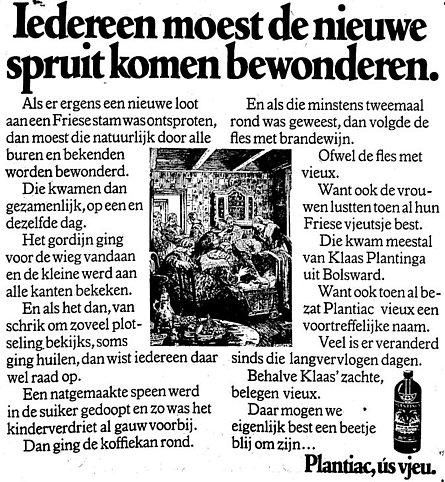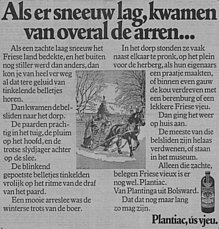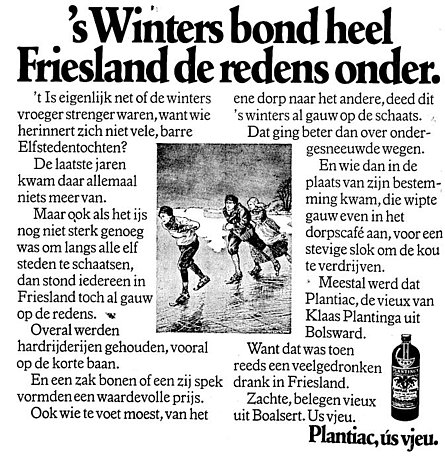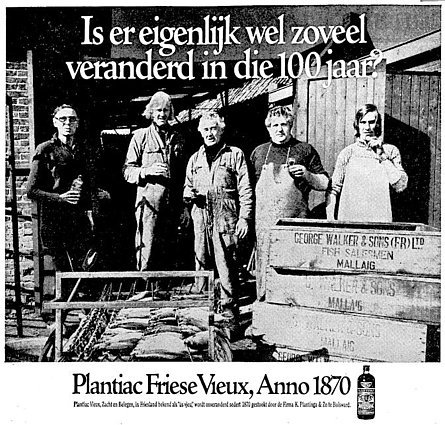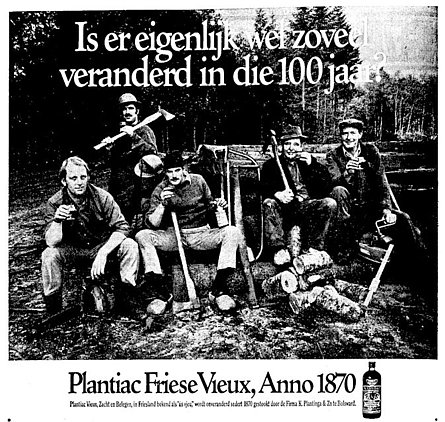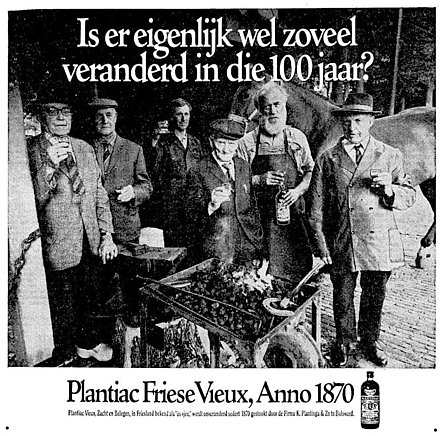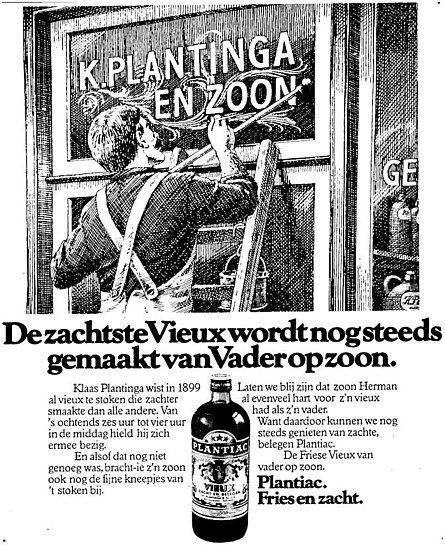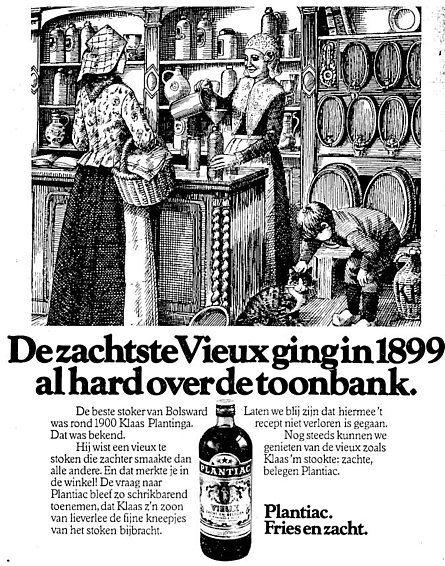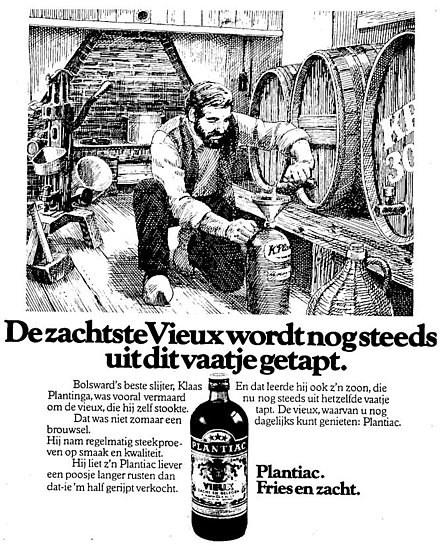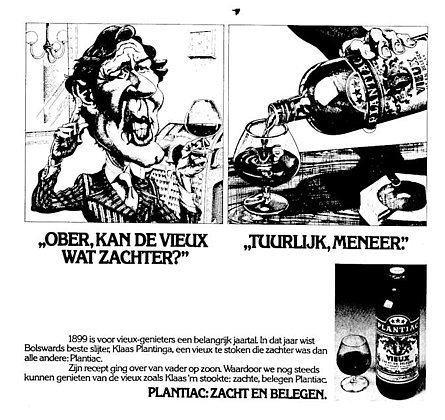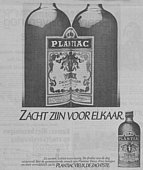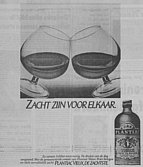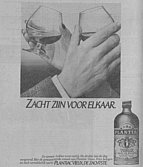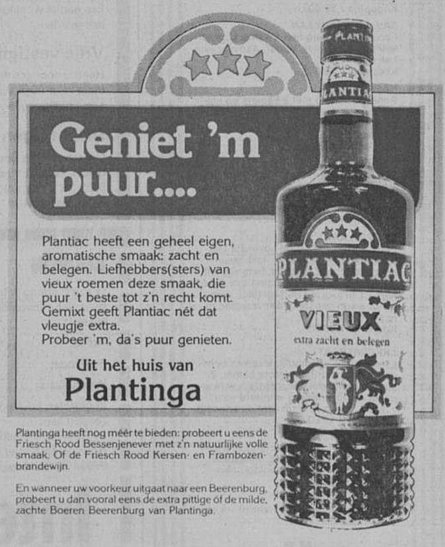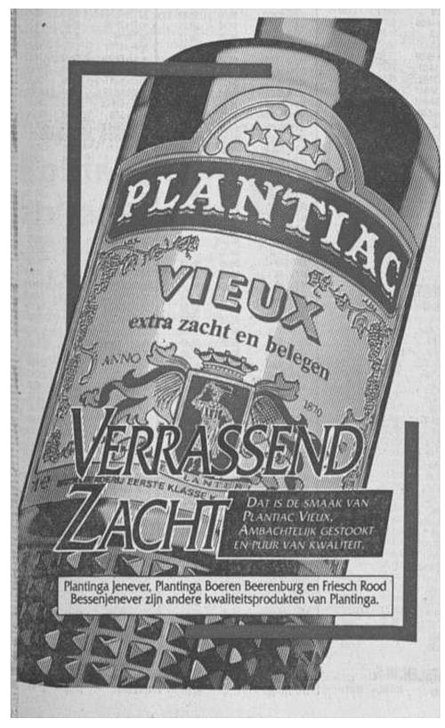Advertisement for Beerenburg or Berry Gin can be found on the pages of those products. Plantiac advertisements that coincided with certain promotional activities can be found on the "Promotional Material" page.
If you are using a so-called "AdBlocker" plug-in, fewer or no pictures will be shown here - they are, after all, (old) advertisements. It is possible to disable such an AdBlocker for a certain site, so you are advised to do that.
In 1970, Plantinga hired the McCann-Erickson advertising agency for a series of newspaper adverts. This resulted in several series of adverts, to be published every Friday for several weeks. This is the first one, published on 16 October 1970. It uses the familiar story that Klaas had gone to the US and Ytje refused to go, and in the end love conquering all with Klaas coming back and starting a wine shop. Scan provided by Bastiaan Plantinga.
The next one in the series, featured in the Nieuwsblad van het Noorden on October 23rd. The story in it (that Ytje tells her husband that other Vieux types taste too burned and he should try to make a smoother one himself) is a fabrication. Most likely, the Plantinga company didn't make Dutch Cognac (which later got renamed to Vieux) until the 1930s or even 1940s. This same Ytje-anecdote has also been said about Cherry Gins.
Klaas is working at Kettle One and its cooling vat here, see here (9th picture). Even the little sign on the wall at the left is accurate. The light hanging at the ceiling is from another picture in the same gallery, the 1st one (click here). Scan provided by Bastiaan Plantinga.
The third one, about Klaas being quite the walker (so he could bring his Vieux to many people around Bolsward). Note the bottom right: Plantiac celebrates its 100th birthday so you can get a free glass. The only thing that turned 100 that year was the company, certainly not Plantiac itself. Scan provided by Bastiaan Plantinga.
A quaint picture of the inside of the shop is used to extol Ytje's virtues as a business woman.
The shop interior is based on the first picture here, right down to the cut ornaments in the wood of the desk and cupboard. Even the barometer to the left of the smallest vats (top right) is there. The artist replaced the bottles in the cupboard with jugs, though. Scan provided by Bastiaan Plantinga.
his ad sees Klaas on an errand just after midnight on New Year's Day to get some much-needed Plantiac to a pub owner in Franeker. The year was 1905. This story also goes around about a pub owner from Wommels at the turn of the century - a popular apocryphal Plantinga anecdote. Scan provided by Bastiaan Plantinga.
Klaas Plantinga, so says this little story, paid more attention to the taste and quality of his vieux than some other distillers. This was the last of the first series of advertisements.
The room in this picture is based on the eighth picture here, with additional props (the device at the left, and the design of the vats) from the fourth picture. Scan provided by Bastiaan Plantinga.
1971 advert on account of the company existing for 100 years (101, actually) and the opening of the new Stoombootkade 12 distillery ("If only Klaas and Ytje had been around to see this"). This appeared in the newspapers exactly one day before the new location opened, i.e. on 13 May 1971. Picture provided by Peter Mulder.
As autumn was once again driving the people to stay inside and have some nice soothing drink, but now in 1971, the Plantinga company commissioned a second series of advertisements. This was the first. It tells the story of how Klaas found his luck (i.e. Ytje) in the bakery at Dijkstraat 5, and that he kept on bringing all kinds of pies and stuff home, just so he could meet Ytje regularly. It also says she told him the wine shop next door (Dijkstraat 7) was for sale. Scan provided by Bastiaan Plantinga.
The second ad in the series tells the story of how Klaas was drafted for the army, not long after he had come back from the US. It says his friend Doekele Bakker from Midlum offered to function as a replacement, so Klaas could continue to work as a distiller. So we owe practically everything to Doekele! Scan provided by Bastiaan Plantinga.
Set in the 1890s, this ad says Klaas preferred to visit his customers on foot, instead of on these newfangled gadgets called bicycles...
The artist was inspired by the Distillery at 't Laag (click here to see) for the houses on the left. The bike featured here, needless to say, is too modern for the 1890s. This picture was also used for the stained glass promotional item (see here, scroll down). Scan provided by Bastiaan Plantinga.
The next ad in the series shows how diligent and serious the Plantingas were. Even after they closed shop ("at 10 PM"), they did not attends soirees or anything. Rather, they did their bookkeeping. The artist based his rendition of this business scene on what was known as "The Small Office" at Dijkstraat 7. See the third picture here. Even the chairs are the same, though swapped, and the artist added a (period-correct) telephone. Scan provided by Bastiaan Plantinga.
Here's a little tale of how conscientiously Klaas cleaned his jugs after they came back from the customers, before using them again. The artist was once again inspired by authenticity. The building behind Klaas is based on the back of the Distillery at Grootzand 6 - see Historical Awareness - The Distillery at Grootzand 6, the third picture (or click here). Check out that water pump! Scan provided by Bastiaan Plantinga.
This last of the 1971 Plantinga adverts introduces Klaas' son, Gerrit Herman (named Herman here). Klaas needed his help because business was booming.The artist more or less duplicated the original logo above the shop door here. In 1971 that was still on there, as it didn't get removed until 1990. See "Locations" > "Dijkstraat". He does seem to have put the window that was at the left of the door (with the "GE" of the word "GEDISTILLEERD" and the bottles/jugs) to the right of the door. Scan provided by Bastiaan Plantinga.
The year 1972 saw the third series of Plantinga advertisements, again timed during the autumn/winter season, this time with smaller pictures of which bigger versions were also used (see below - of at least four of them, possibly all). It did not concentrate on Klaas and/or Ytje, but on Frisian folk and folklore in general. The pictures were from well-known Dutch illustrator Cornelis Jetses, all made in the 1940s. This one tells the story of how wonderful Saturdays were back in Friesland back in the day, and that people used to make a visit to the Plantinga shop part of their Saturday experience. Larger versions of the Jetses illustrations were also used separately. Scan (left) provided by Bastiaan Plantinga. Picture (right) provided by Dirk Sellis.
This wedding scene harkens back to an earlier Plantinga ad (the 15th when counting from the top of this page). Whereas that previous advert only had the picture, this one puts more emphasis on the description. This one depicts a traditional wedding scene with the bride and groom sitting under the "Bridal Crown" (attached to the ceiling, on the left) and the groom smoking the ceremonial "Breugemanspijp/Brêgemanspiip". The bride wears a bright white collar with a golden lock. The crystal decanters on the table were supposed to be filled with Beerenburg, brandy and vieux. Obviously the vieux would be Plantinga's. Scans by Bastiaan Plantinga and Dirk Sellis.
The year 1973 saw a new ad campaign, based around the premise that Plantiac Vieux had supposedly been made, with not any aspect of its creation changed, since 1870 (or for 100 years, or whatever). A few years later (below, the 1978 campaign) stated the year of inception as 1899. In reality, as was stated earlier, it was probably more like the 1930s or 1940s. Ad copywriters clearly believe in artistic liberty :-). Their art department also seems to have taken artistic liberty with their subjects, as all these pictures seem to have been Photoshopped avant-la-lettre.
Three different scenes from the 1973 ad campaign are known. These are fishermen. George Walker & Sons of Mallaig actually exist. They are fishmongers in Northwestern Scotland. I contacted them and they said their Walker & Sons crates could have appeared pretty much anywhere in Europe at that time, including in the Netherlands. Seems legit. Scan provided by Bastiaan Plantinga.
And then 1978 saw the reuse of several of the 1971 campaign illustrations, with different text and different headings. All of them emphasize the authenticity of this Vieux, of it having been passed on from father to son. This is the first one, published 31 August 1978. Scan provided by Bastiaan Plantinga.
